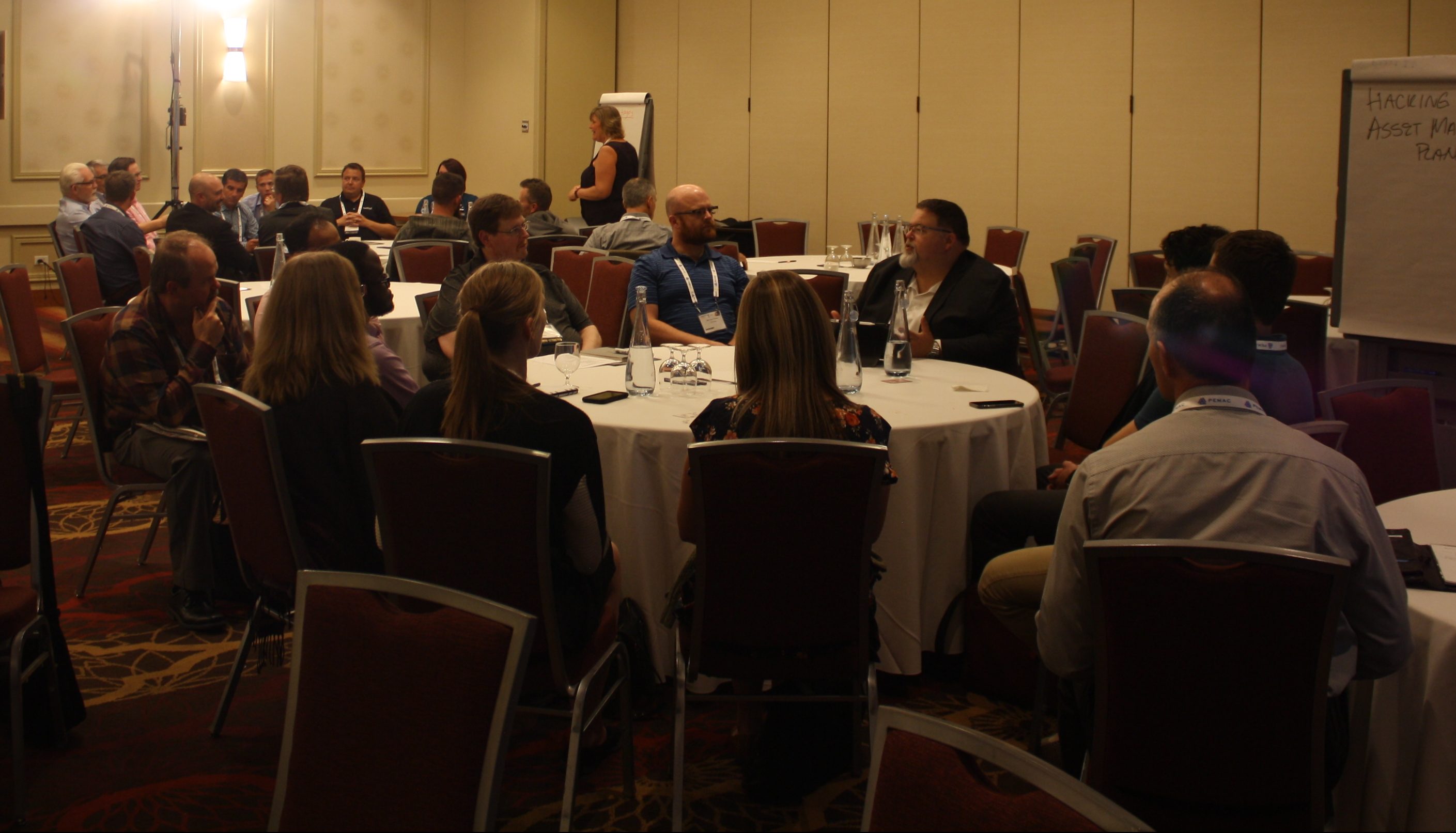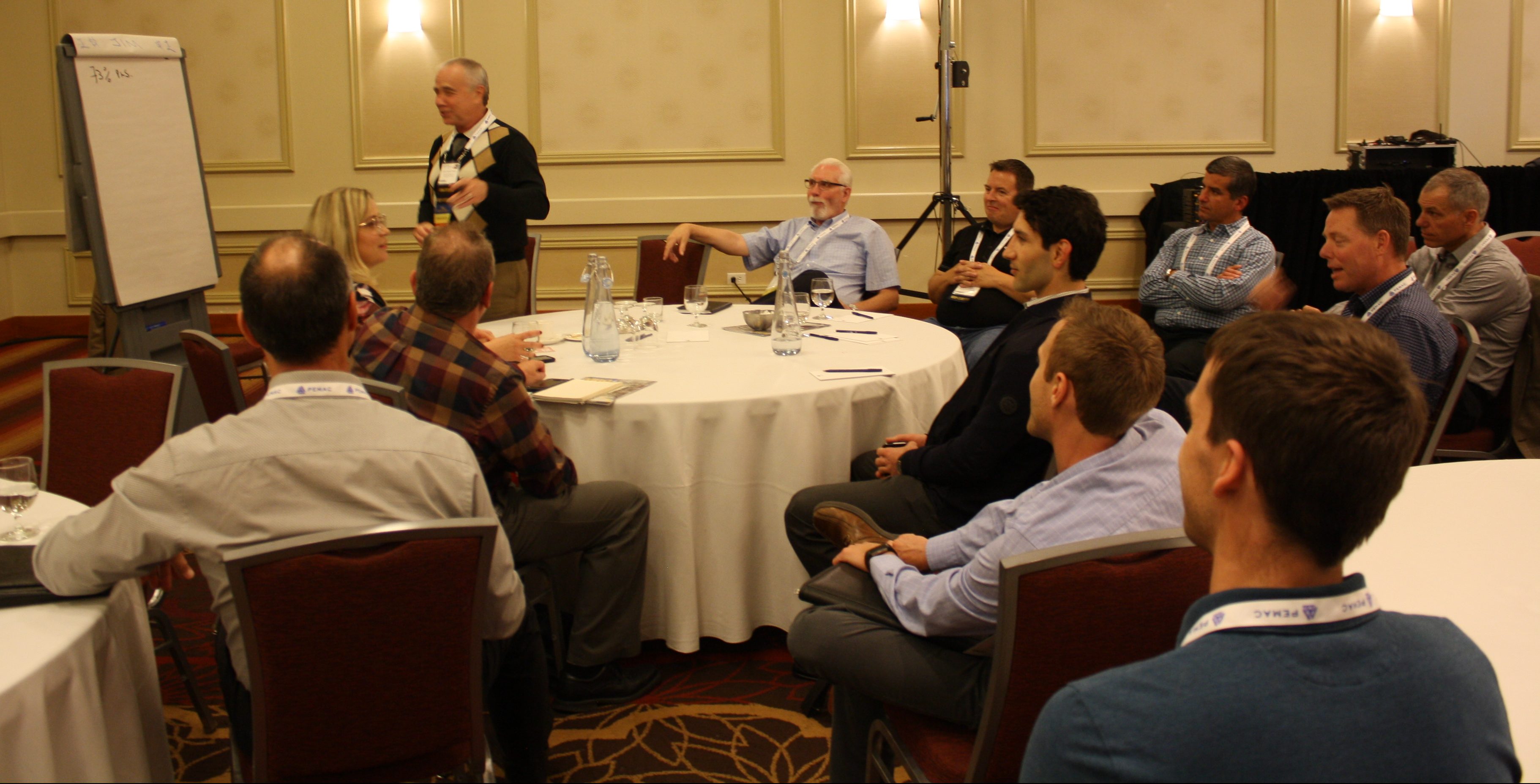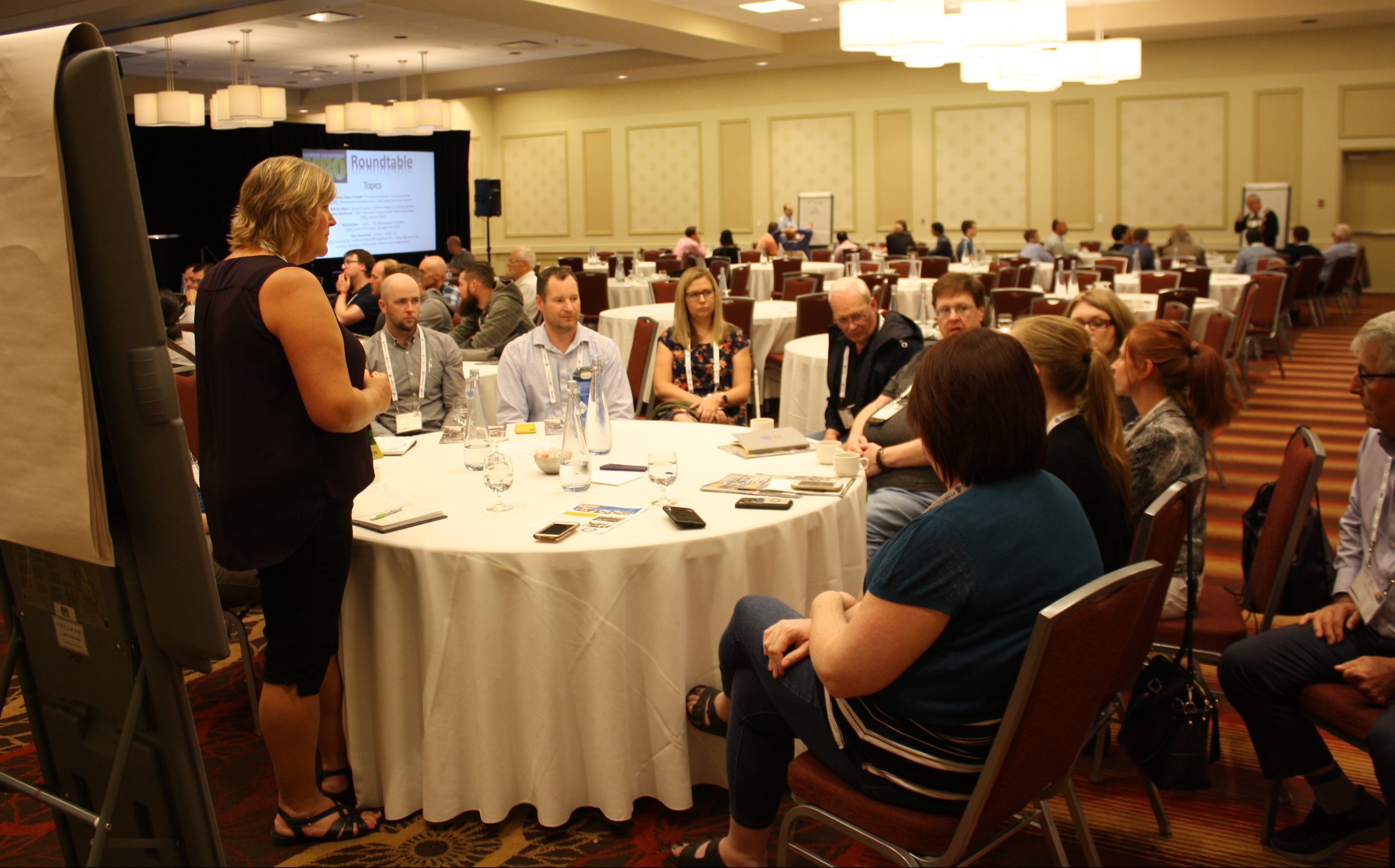
Maintenance professionals discuss topics vital to their facilities.
MRO recently hosted a roundtable discussion during the MainTrain conference hosted by the Plant Engineering and Maintenance Association of Canada (PEMAC) in Edmonton, Alberta. It brought maintenance professionals from all over Canada together to discuss topics vital to maintaining top efficiency within their facilities.

Photo: Mario Cywinski.
The format this year had four discussion groups, with each group discussing topics (lasting approximately 30 minutes) with two different facilitators. After the first discussion, participants moved from one table to another, to discuss another topic they were interested in. After the table discussions, the facilitators summarized what was discussed and presented it to the entire room.
Topics covered this year included:
• Mobile CMMS by Martha Myers, Owner/Founder of MaRTHA Myers Consulting Services, and Shauna MacKenzie, AMO Operations Support Lead at Nova Scotia Power.
• Asset Information Management by Richard Beer, Owner at TRO Maintenance Solutions.
• Maintenance Business Cases – What Works and What Doesn’t by James Reyes-Picknell, Principal Consultant at Conscious Asset.
• Hacking the Traditional Asset Management Plan: Using Alignment and Business Thinking to Drive Greater Value for Your Organization by Ross Homeniuk, Partner, Global Infrastructure Advisory, and National Leader, Asset and Operations Management at KPMG LLP.
MRO asked each facilitator to summarize what was discussed at their table. Following are the highlights.

Photo: Mario Cywinski.
Maintenance Business Cases – What Works and What Doesn’t
We talked about maintenance business cases and how to develop them. A basic method for determining cost savings based on increases in planned and scheduled work was demonstrated using data from one of the table participants who worked at an airport. In that case, the benefit of making improvements is solely from cost savings, because there is no additional revenue capacity in that business environment that can arise from improved asset performance alone. The savings (ongoing) would be just under $1 million, so costs to achieve them should be kept below this to meet corporate ROI requirements.
Revenue increases based on additional availability of assets can be determined. We used another example, also from a participant, this time at a major pipeline company. Even though asset availability was high to begin with, the participant knew it could be better. Using a simplifying assumption that at steady state, a one per cent increase in availability can result in an increase in revenue equivalent to one per cent of pipeline flow generated revenues today. In that case, the value was in the tens of millions. Clearly, more money could be made available to pay for the improvements in that case.
Caution was advised as each business is different and revenue generation capacity may not always ramp up in direct proportion to availability, and there may be a practical limit as to how high it can go.
Mobile CMMS
Two groups discussed Mobile CMMS and its challenges and benefits. Approximately 30 per cent either were using a mobile CMMS as part of their maintenance management program or were in the early days of piloting the tool. Common challenges were software compatibility and connectivity. In many cases, the mobile software is different than the original CMMS or EAM company; therefore, ensuring that they “talk” to each other is not always straightforward. Connecting to the Internet and achieving a good, fast signal has also been challenging, especially in certain areas (underground).
Working with IT and security to get approvals to utilize the devices has also been a challenge, as well as finding devices that are intrinsically safe.
Once overcoming the challenges, it was clear that the advantages are well worth it. Being able to gather history on what was done in real time, means more accurate data. Crews are able to spend more efficient time in the field and are able to take pictures of (as found conditions), and what was done. This allows for better planning in the future.
Asset Information Management
We discussed the fact that asset information management (AIM) is more than just technology. The system is made up of technology, process, and people.
For example, if your people are not on board, then the program will be undermined. What AIM is striving for is to ensure there are standardized processes and tools in place to improve the likelihood of a change to the physical asset has a corresponding change in the information plant.
We also discussed some of the challenges of AIM and the need for rules and a governance layer for enforcement of the rules. These rules would address the need for data consistency and adherence to naming conventions and standards.
Hacking the Traditional Asset Management Plan: Using Alignment and Business Thinking to Drive Greater Value for Your Organization
Public and private sector organizations rely on vast portfolios of infrastructure to support effective operations and the delivery of products and services. Faced with aging assets, changing demands, and growing financial and operational constraints, companies are in fierce competition for available resources. As a result, many organizations are being forced to think more strategically about their assets, how they are managed, and the value they deliver.

Photo: Mario Cywinski.
Leading practice, such as the ISO55000 series of standards, calls for alignment and greater clarity in the connections between physical assets and operations, and the service and business outcomes they support. Clearly defining these relationships – the asset value hierarchy – will allow us to quantify and effectively communicate the impact of infrastructure and operational investment on business objectives and the service outcomes that need to be produced.
A good asset management plan essentially serves as a business plan for asset-reliant operations, providing mid- to long-term insight into the assets, operations, and investments needed to support required outcomes. Incorporating an organization’s asset value hierarchy creates line-of-sight within the document between business goals and required outcomes, the supporting performance from infrastructure assets, and the investments and operations needed to sustain them. Applying this thinking allows for the evaluation of service (performance), risk, and cost, allowing the organization to evaluate and compare different strategies and options, and clearly communicate their value to stakeholders.
The session shared some key questions to ask in evaluating the effectiveness of asset management planning within an organization:
1. How are asset management plans used within your organization? Are they driving operations and investment, or merely reporting what is already being done?
2. Does your asset management plan build alignment? Are there clear linkages between business goals and outcomes, needed asset and operational performance and the risk of not having it, and supporting actions and investments?
3. Does your asset management plan provide a holistic view of needs and priorities? What is missing from the picture? Where are the interdependencies, and how are they being met?
4. Who are the key (internal and external) asset management stakeholders for your organization? How does your asset management plan ensure their needs are being met?
At the end of the day, the interactive discussions were lively and engaging, and attendees left with newfound knowledge. MRO will be putting on its annual roundtable again in 2020 at the MainTrain conference in Saint John, New Brunswick. MRO
